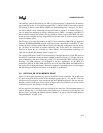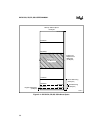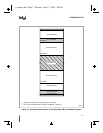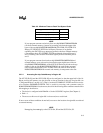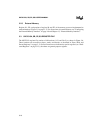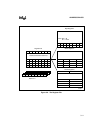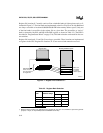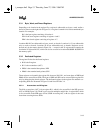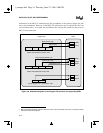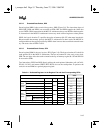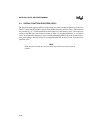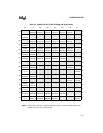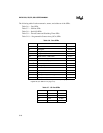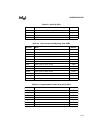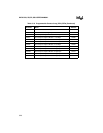
3-13
ADDRESS SPACES
3.3.1 Byte, Word, and Dword Registers
Depending on its location in the register file, a register is addressable as a byte, a word, and/or a
dword, as shown on the right side of Figure 3-6. A register is named for its lowest numbered byte
location. For example:
R4 is the byte register consisting of location 4.
WR4 is the word register consisting of registers 4 and 5.
DR4 is the dword register consisting of registers 4–7.
Locations R0–R15 are addressable as bytes, words, or dwords. Locations 16–31 are addressable
only as words or dwords. Locations 56–63 are addressable only as dwords. Registers are ad-
dressed only by the names shown in Figure 3-6 — except for the 32 registers that comprise the
four banks of registers R0–R7, which can also be accessed as locations 00:0000H–00:001FH in
the memory space.
3.3.2 Dedicated Registers
The register file has four dedicated registers:
• R10 is the B-register
• R11 is the accumulator (ACC)
• DR56 is the extended data pointer, DPX
• DR60 is the extended stack pointer, SPX
These registers are located in the register file; however, R10, R11, and some bytes of DR56 and
DR60 are also accessible as SFRs. The bytes of DPX and SPX can be accessed in the register file
only by addressing the dword registers. The dedicated registers in the register file and their cor-
responding SFRs are illustrated in Figure 3-8 and listed in Table 3-4.
3.3.2.1 Accumulator and B Register
The 8-bit accumulator (ACC) is byte register R11, which is also accessible in the SFR space as
ACC at S:E0H (Figure 3-8). The B register, used in multiplies and divides, is register R10, which
is also accessible in the SFR space as B at S:F0H. Accessing ACC or B as a register is one state
faster than accessing them as SFRs.
i_mempar.fm5 Page 13 Thursday, June 27, 1996 2:06 PM



